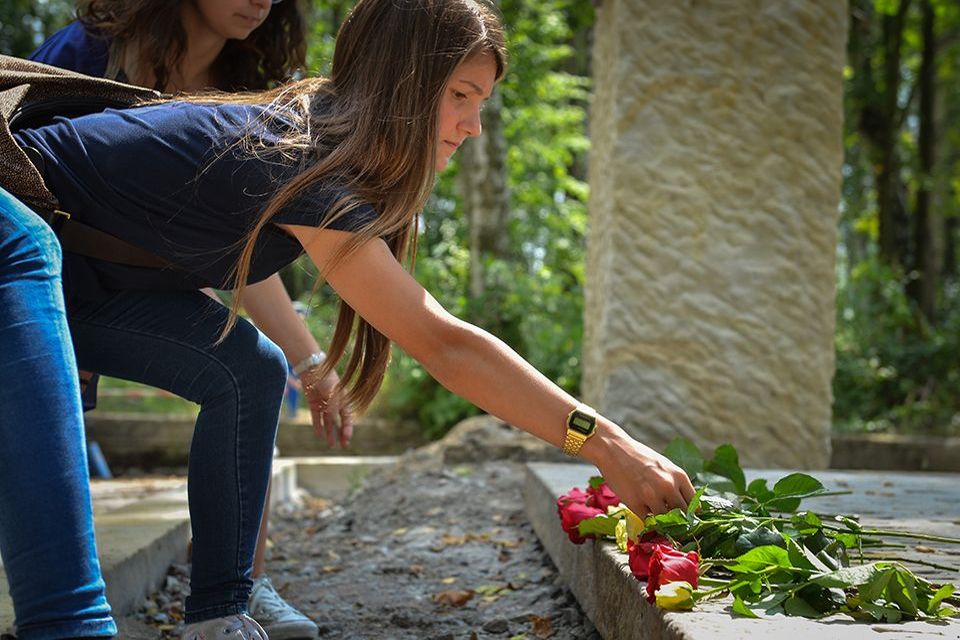
German-Polish Workcamp
“brick project” (honoured by the Franz-Bobzien-Preis 2014)
The Brick Project (since 2010) is a one-week workcamp with the goal to transform the former Nazi prisoners of war camp STALAG VIII A Görlitz Moys (today´s Zgorzelec) to a dignified memorial. Around 120 000 soldiers were interned here during the second World War. A huge part of them were murdered and inhumanly and anonymously buried. At first mostly Polish soldiers were captured. In the further course of the war the camp was also place of accommodation for soldiers from diverse counties, for example Great Britain, Serbia, Yugoslavia, Italy, the Soviet Union and the United States of America. The Soviet soldiers were quartered in a separate area in camp.
On the workshop participate ninth graders from the 7. Integrated Secondary School at the Ringstraße in Berlin Tempelhof-Schöneberg and since 2013 ninth graders from the Polish partner school Zespół Szkoły Podstawowej i Gimnazjum Im Jana Pawła II in Sulików.
The workcamp toke place for the forth time in June of 2014. To prepare the students for the workcamp, they get a content-connecting introduction through the German-Russian museum of surrender and the national confederation of German war grave care. At the camp ground the students and teacher work together with the MEETINGPOINT MUSIC MESSIAEN on the three main aspects of the project: the historical reconditioning – comprehending, maintenance work and integration with a view of a united Europe. On these, the maintenance work, includes arrangement and cultivation works, which are done by students. In 2013 the camp´s focus was on landscape cultivating steps to restore the monument. The second focus was to remember and therefore the effort to reappraise and understand the history around STALAG VIII A. The students researched based on original documents first the story of a former prisoner of war and than burnt a clay tile with the name of the prisoner and the dates of his captivity. The tile was put down at the area of the camp in a special ceremony. While the names of the prisoners of war were known, but not shown at the camp grounds, the students accomplished a great contribution to remind on the victims.
The special about the project, next to the restoration work and the remembering through the clay tiles, is that the camp is a inclusive one – students with special mental or physical needs also participant. At the other hand a huge part of the students from Berlin has a migration background. A lot of them even had to deal with own civil war and violence experiences and just have a small knowledge of German. They come only with Polish-speaking students together, so that the camp get an excellent intercultural significance and a symbol of the important role of nonverbal communication.
With their work at a former Nazi prisoners of war camp, the students achieve a big portion of memorial work and connect in this way the past with the presence. It is not only impacting the students, but the camp grounds too, because it gets piece by piece a visible character of a place to remember.